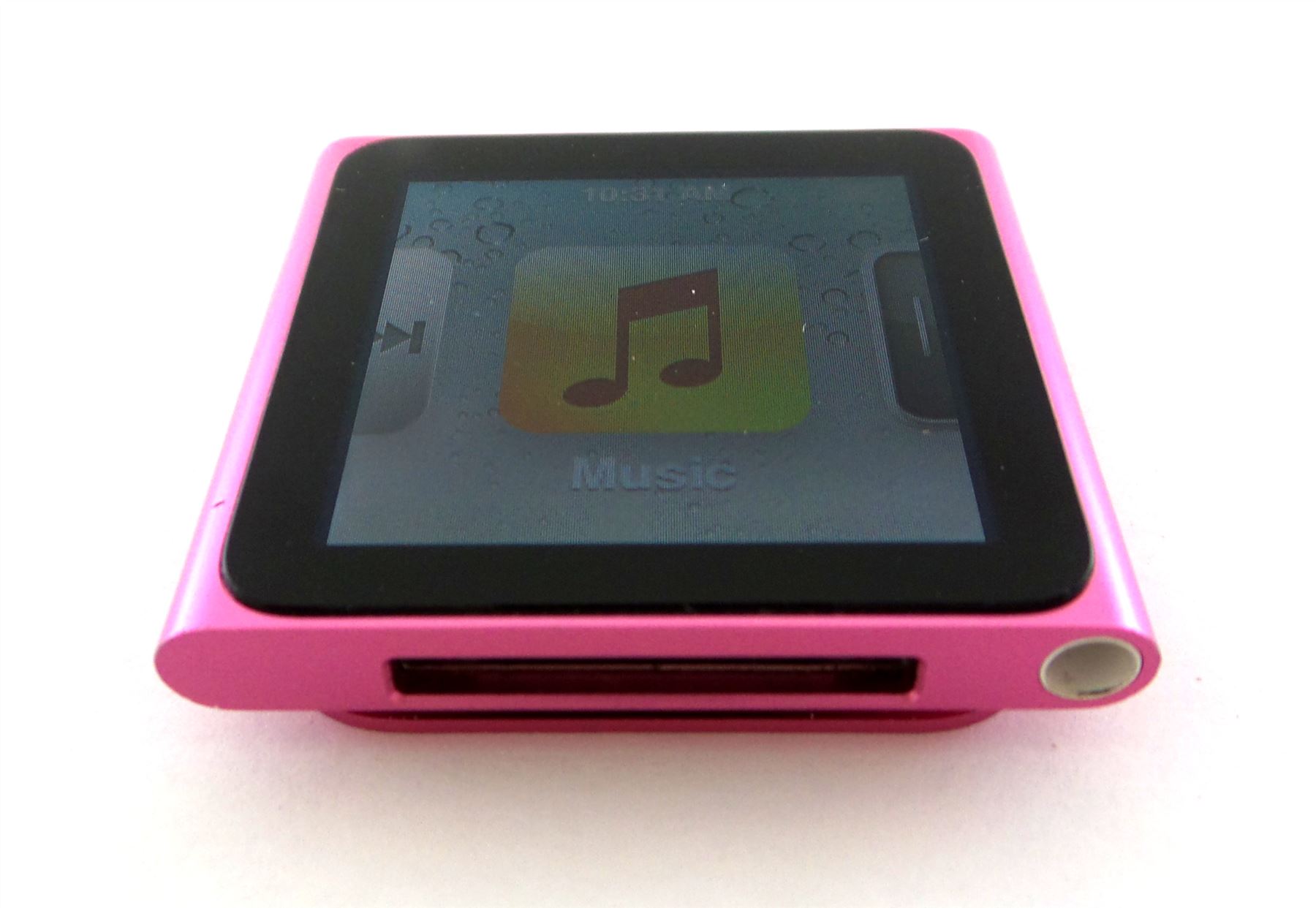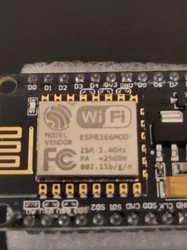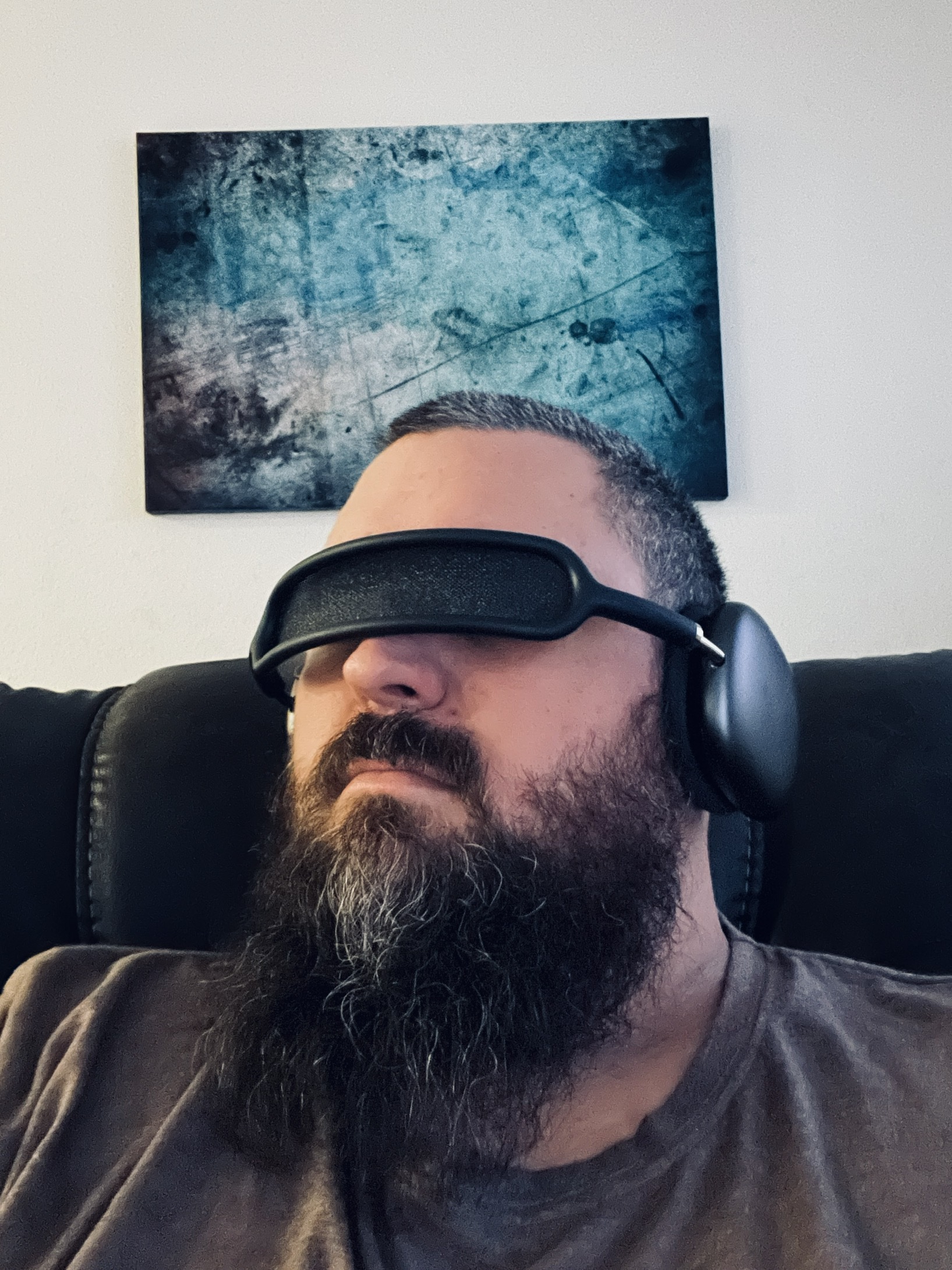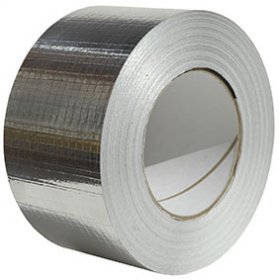At that scale, the connector and the necessary electronics are too large.
Some watches already have USB - C. but I find it interesting to see if you are correct or not.
I would see standardizing wireless charging as a decent alternative…if it didnt take up even more space.
It’s also hard to make a port like that water resistant. Using wireless charging is easier to make flat and seal tightly.
If you mean a USB-C port in general, they can be made waterproof. If you mean something specific to putting one in the most compact form factor possible, that might be true.
And that requires more space than a typical port. In a compact device that is difficult. A flashlight is literally one of the simplest electronic devices there is and bulk is often a plus for comfort.
A flashlight is literally one of the simplest electronic devices there is
You might be surprised at everything going on inside a modern flashlight. I’ll grant that it’s probably easier to find room for extra seals around the port than in a smartwatch though.
Still not nearly as complex or compact as a smart watch. A little microcontroller versus an arm processor.
A switch mode LED driver can be made very tiny with as few as 4 components. Battery protection and a single cell battery charger can also be very simple.
Then again my flashlight has a microcontroller with open source firmware on it
They can be waterproof but are also non functional until the water is fully cleared from the port.
That kind of waterproofing wears over time (years). It keeps it’s resistance, but not a submersible seal. Watches have longer use years than phones on average.
oh quit that bs. There was waterproof (not resistant) micro usb more than a literal decade ago. If anything they should have gottn better.
And that requires more space than a typical port. In a compact device that is difficult.
Eww, micro usb. I get the shakes just thinking about it.
deleted by creator
It’s not that it’s too large to exist, but it’s certainly large enough that it’ll make a dent in the battery space, and smartwatches are already battery-starved compared to dumb ones.
Its a terrible idea for a number of reasons, but as everybody else is saying, that doesn’t mean you give up on standardization.
I wrote the post above. So far, the USB-C watch has lasted over 3 days and still has over 50% battery power.
Obviously, at that price it isn’t running a cellular radio or GPS. BLE is amazingly efficient - as are the built in sensors.
3 Days is great!
That gives me no information. What’s the battery size? I’ve had multiple smartwatches and all their batteries could last a week or a day depending on usage, setup and features.
The point is USB C is noticeably larger than pogo pins for the sake of including a whole bunch of additional pins a smartwatch has zero use for. Larger means less room for other stuff. The ideal state for a smartwatch is having an always-on display and heart rate monitoring, among other things. All watches out there, even the most efficient ones, could use more battery and efficiency than they have. Because all smartwatches are coming up short from their desired usage and are working around their limited battery life.
The idea of making that worse for the sake of having a clearly unfit for purpose connector as opposed to standardizing a connector that actually does the job is really weird. There is no need to have a different charger on every watch, but there certainly isn’t a need to sacrifice any functionality or performance at all for the sake of USB C. And not all watches are the same size, so this would impact smaller watches more, which now is limiting what type of watches you can make if you make USB C a standard. And if it’s not a standard, then it’s not fixing the problem.
And all that’s even before you begin to consider that watches are more comfortable to charge when they have a stand to do so, since they’re small, light and fiddly, so it’s entirely possible for a bulky USB C cable meant for fast charging to be heavier than them or stiff enough to actively move them around. There’s a reason watch chargers tend to come with very thin, flexible wires. All you need to fix this problem is a magnetic stand that can hold any watch. Half the USB C cables I own would knock over my watch stand if plugged into my watch or drag my watch across the table.
You can make a watch that charges via USB C and still works. That’s not an optimal solution, but you can. But it’s not a valid standard because you can’t very practically make all watches charge via USB C. Standards need to be standard.
What’s the battery size?
The website claims 280mAh. That’s a smaller than the newest Pixel watches - but then it is only about 10% of the cost of those models.
The point is USB C is noticeably larger than pogo pins for the sake of including a whole bunch of additional pins a smartwatch has zero use for.
Agreed! But that rather depends on what you want to use it for. This model is charge only. But it could be useful to use it as a USB drive to store music, or to get health data off it. The main advantage for my personal use-case is being able to charge while wearing it.
The ideal state for a smartwatch is having an always-on display and heart rate monitoring, among other things.
Yes! This does have always-on heart rate monitoring and step count. The screen is only on when you glance at it or tap the button.
And if it’s not a standard, then it’s not fixing the problem.
Agreed! But as the Pixel watch has gone through three different charging standards, all of which are incompatible with other watches, we don’t seem to be any closer to solving that problem with wireless.
And all that’s even before you begin to consider that watches are more comfortable to charge when they have a stand to do so, since they’re small, light and fiddly
That’s a personal preference. My Pixel watch stand is fiddly to use - the magnets don’t always align. And the puck charger is pretty lightweight and moves around easily. By contrast, my lightweight USB-C cables don’t move my watch when it is charging directly.
Standards need to be standard.
I agree! But sometimes it is nice to experiment with things to see what works. And I’m very happy that this normal-sized watch is able to charge with the same cable I use for my toothbrush, eBook, headphones, fan, and phone.
Hold on, so now you want to use USB C for data transfer? Which means you want to what? add more storage to the watch? That sure seems like a solution looking for a problem you’re only floating as a result of choosing USB as the charge port, which we probably shouldn’t do.
And that’s not just much less battery than on the Pixel at 420mAh, it’s even smaller than the CMF Watch 2, which reports 305mAh and is only seventy bucks (and if anything seems smaller than all of your examples). So yes, there is an impact on battery. And no, that’s not acceptable. Because again, ALL smartwatches need more battery than they currently have.
The point of the always on HR monitoring and screen isn’t that they exist, it’s that they are a massive battery drain. A smartwatch where you turn those off will last several times more than the same watch with them on, particularly on entry-level devices like ones you point at. And you would ideally wnat those on in a perfect smartwatch while still getting multi-day battery life. Right now we just don’t have that because you can’t work your way around physics.
Now, for an experiment? Sure, go nuts. Put a solar panel in there. A hand crank. Who cares, weird hardware is weird and weird is fun.
But to solve the problem with the ever-changing charger standards from the mainstream manufacturers weird won’t cut it. You need a solution that fits all cases with near-optimal performance. USB is just not it for this form factor, and if anything focusing on it distracts from the very real need to come to a proper standard in this space, which I find somewhat annoying.
Hold on, so now you want to use USB C for data transfer?
Sure, why not? My headphones have a built-in MP3 player which I can load up with 32GB of music. Flash memory is tiny and cheap - why shouldn’t my watch have my music collection on it? Is grabbing a CSV of my data via USB easier than trying to send it via BT? Might be. Let’s find out.
Because again, ALL smartwatches need more battery than they currently have.
For you, maybe. This £16 one has lasted nearly 5 days of doing continual heart monitoring and is still on 40% battery. Even better, I don’t need to take it off if I want to charge it. Weekly charging is better than my phone or laptop.
I slightly disagree with you about the screen needing to be always on. I’m not always looking at my watch, so it might as well save battery where it can. I don’t leave my laptop screen on when I walk away from it, and that has a much bigger battery.
weird hardware is weird and weird is fun.
On that we can agree! This is a fun experiment.
You need a solution that fits all cases with near-optimal performance.
I disagree. I think it is OK to have some choice in the market. Some people will prefer magnetic wireless, some wired, some plutonium batteries.
and if anything focusing on it distracts from the very real need to come to a proper standard in this space, which I find somewhat annoying.
Like, mate, I don’t have the power to enact anything. I’m just one guy blogging. I’m not involved in the design, manufacture, or standardisation of anything watch related. I don’t understand why you’re getting annoyed by me talking about it though.
Some do, but the limitations of usb C (or any physical plug) are present and while it sounds nice in principle to have all the devices use the same cord it’s in general not worth the sacrifices that others have mentioned like it taking up extra room and the increased likelihood of water/sweat/particulate ingress
I have the pixel watch 2, and waterproofing is very important to me when it comes to a smartwatch. I work in healthcare and have to wash my hands upwards of 30 times a day. If I had to take off my watch every time or gamble on a rubber flap adequately covering the charging port, it simply would not be worth the hassle.
Let’s ignore the iPod nano 6th gen, which managed to fit a 30 pin dock connector and a headphone jack into a watch sized body

With vastly lower power requirements compared to a smartwatch
Not really relevant: power requirements would affect battery size much more than charging port size. And USB-C supports much greater power transport than the old dock connector.
Right, my point is that we want to use that space for battery, not bulky connectors.
Given that an iPod nano only lasted a few hours on a charge and most smartwatches can last multiple days, I’m pretty sure that’s not so. Even if they had apples-to-apples identical functionality I think a modern device would consume less power simply due to current chips being more power efficient via using smaller dies and lithography processes.
Plus, an iPod has to crank its weedy little processor full time as long as it’s playing music. Your smartwatch pretty much only has to do anything when an external stimulus wakes it up, be that pressing a button or tapping its screen or receiving an alert or whatever. I’ve developed software for some of the Garmin models myself and I can tell you that the power consumption and processing time limitations imposed by the system are extremely stringent. The majority of the time even in a second-by-second basis your watch is completely idle, specifically to consume as little power as possible and conserve the battery.
The last gen iPod nano touted a 30-hour battery life. Also, you don’t need to peg the CPU for rendering audio - this can be accomplished with a very low-power DSP. The lack of radios also offers significant savings when compared to a smart watch, which you forgot needs to be able to receive notifications, not just wait for low-power sensor input.
I’ve professionally developed the firmware for several embedded systems and consumer electronics devices with very strict power requirements.
The 7th gen iPod Nano which you’re referring to (not the 6th gen the commenter above posted, which had a rated 24 hour battery life) had a 200 mAh battery.
A lowly Garmin Forerunner 230 like the one strapped to my wrist right now has a 150 mAh battery and achieves five weeks of battery life with notifications enabled (which I did not “forget”) and the BLE radio twittering away all day, GPS time and position updates, activity tracking, and the screen displaying content all the time. Not 30 hours. 840 hours.
Just acting as a plain watch with the connectivity turned off Garmin claim it’ll last 12 weeks (2016 hours).
I should not have to point out to anyone that it is physically impossible for an iPod to achieve a significantly shorter runtime on a larger battery without consuming more power in the process.
Now imagine at best halving the physical space for that hall battery by adding a waterproof USB-C port and associated PD electronics - which at that scale would mean significantly more than a 50% reduction in battery life.
And yet, I literally have one on my wrist now. It’s not noticeably bigger than the Pixel 3 watch.
Here’s a video of it in action - https://tube.tchncs.de/w/vYTnG6eKghnicdNj5nkhVx
This is confirmation bias, you know it’s possible so you’re discounting downsides.
Yes, a connector can fit in the watch, but the internal footprint of the connector is comparatively huge. All the other components of the watch would need to be designed to fit around a large connector essentially directly in the middle of the device internals.
If that’s really important to you, more power to you. I don’t have an issue with it existing. I do have a bit of a problem with pretending that compromises aren’t being made in features to accommodate it.
A standardized magnetic pogo pin connector would meet my needs quite a bit better, personally.
A standardized magnetic pogo pin connector
That’s something I hadn’t considered before. What a neat idea.
https://pine64.org/devices/pinetime/
The charging base is just breaking out the 5V of the USB to the pogo pins!
I’m not discounting the negatives - I’m saying it is possible and feasible.
As I point out in the article, the Pixel watch is now on its third charging format. None of which seem to be compatible with Apple or Samsung.
There are also compromises with the pogo-pin connector. You can’t charge while wearing it. You have to bring along another cable. Bits of metal can be attracted to the magnets and cause mechanical or electrical damage.
Liking that! Pros and cons? I’m pretty damned rough on my gear, why I almost exclusively wear Casio. Water is a serious concern for me.
Pros? It is cheap, it uses USB-C, step counter and heart monitor work, bluetooth calls work.
Cons? App is a bit crap, but works with GadgetBridge. UI is a bit slow and janky. Lots of watch faces but you can’t design your own.
Full review on my blog later today.
While it would be lovely if watches could support Qi charging, they are just too small to make it work effectively
Ha ha ha.
I can charge my wife’s Samsung watch off Qi on my phone. We had to learn how AND do it while on vacation when the Samsung inductive rig for it was left at home.
Worked like fucking gangbusters.
This article is shit.
I have tried to charge my Samsung watch on all kinds of Qi devices. They don’t work. The newer Samsung phones can charge them, but only because they have a separate set of coils that support watches.
Didn’t know this was a feature so I just tried it and… my watch thinks my phone is “gym equipment” and asks for permission to send my heartrate to it. How do you setup charging?
Did you enable “wirless power sharing” in quick panel settings/device settings? It won’t charge another device without turning it on manually
I can’t imagine how filthy the port would get on mine. Industrial work places and open ports are not
conductiveconducive to the healthy life of electronics.
Btw, using fiddly electronics in a work environment is neither.
I don’t know if you looked at the photo in my post - but there’s a rubber flap covering the USB-port.
Yeah. That makes it splash resistant, not water and grime proof. I have a pair of bone conduction headphones I wear at work with that flap and I still have to use contact cleaner on that port like at least once every couple of weeks.
Not conductive? Isn’t that a good thing?
Lol, conducive was the word they were going for
I know. :-)
I like you.
For a charging port?
For filth in a charging port, yeah.
The Verge says:
These devices are too dang small, and the technology isn’t there yet. Most standard connectors, like USB-C, are too large to fit within a smartwatch or on devices that are meant to mold to your body. The smaller the device, the more difficult this becomes.
To which I say:
Bullshit!
Watches are small, but the USB-C connector isn’t massive.
The USBC plug may not be “massive” but it still adds more bulk to the watch.
it might be rubbish as both a watch, Android device, and masc-coded jewellery - but it shows that USB-C is viable for devices of this class.
just because cheap ass watches use USBC ports doesn’t mean it’s a good idea. you need to know how these USBC watches actually hold up in the long run before you make that judgement.
I miss my pebble. It was such a good watch. It would last a week on one charge with eink.
The power connector was the fiddliest thing in the world and proprietary so when it failed and the batter failed soon after…the watch was dead.
yeah a standard charger would be nice, but I’m not sure the answer is USBC.
Clearly we need MicroUSB-C /s
don’t give them ideas
I know, right?!
Pebble is coming back.
yeah I saw that…might take a closer look after its out and reviewed. ATM my forever watch (and old CASIO) is still going strong. It outlived the pebble haha.
My OG pebble lives on, albeit with a 3 day battery life. I’ve preordered the new one and hope that it’ll last even longer 🎉
Nice, let us know how that goes!!
I have a Garmin watch. Lasts 2+ weeks on a charge depending on how I use it.
Ive heard it works with solar too? Does it stop working after a certain timeperiod of just go into low power mode until it gets enough sun?
I don’t know about the lesser Garmin models but I have a Fenix 6 Pro Solar and there isn’t enough panel surface area on it to indefinitely power the watch. Garmin only state that it “extends” the battery life by a few days. I haven’t tested it to see if you power the thing off completely if it will refill the battery from dead by any meaningful amount but I suspect not.
Not all of them have the solar option. In fact, very few of their lineup do.
Also: Garmin recently enshittified by simultaneously adding an AI slop component that works by taking all of your recorded fitness and location data and doing gods know what with it, as well as a paid subscription tier to their obligatory smartphone app – the latter after explicitly promising for many years that they wouldn’t. So not only is their hardware expensive (and their owners are now rightly pissed), they’re also liars. I would not give them any money until they shape up, if I were you. Assuming they ever do…
Also: Garmin recently enshittified by simultaneously adding an AI slop component that works by taking all of your recorded fitness and location data and doing gods know what with it, as well as a paid subscription tier to their obligatory smartphone app – the latter after explicitly promising for many years that they wouldn’t. So not only is their hardware expensive (and their owners are now rightly pissed), they’re also liars. I would not give them any money until they shape up, if I were you. Assuming they ever do…
Gadgetbridge works with most Garmin models. I have the Instinct 2 Solar and have never created a Garmin account or downloader the app.
It does not work with either my Fenix 6 Pro Solar (specifically that one, other Fenix 6 variants are listed as working) nor the Forerunner 230 that somebody just gave me. Both of which are a drag, and I can’t be arsed with learning how to add my own support right now at this minute.
Honestly, I’ve just been using my Fenix unconnected and it’s really surprising all it can still do. The only function I don’t have that I cared about was receiving notifications. The sensors and topo map and all still work fine and you can even still track rides and hikes, but you have to offload thr GPX tracks via USB and figure out what to so with them yourself.
It’s almost like the dumbass limitations of the app are all just artificial, to the surprise of absolutely no one.
Yeah it’s a shame the path Garmin is going :(
I had one with solar and one without, I think the solar is mostly useless.
It only takes a short time to charge it up with the USB charger (proprietary charger, FYI) so I don’t think it really matters.
The good Garmins last 2 and half months no charge. An hour in the sun adds a week. Ink display and solar glass. It’s awesome. In the smart watch health space garmin is second to none. Especially so for battery.
As a current Garmin user I really like a lot of the features of the Garmin but the app for smart watch health tracking is atrocious and some of the values you get are clearly wrong like it recording my resting heart rate at 15 bps lower than it actually is.
The battery life is still insane which makes things like sleep tracking really nice
I and my family have had Garmin’s like the venu line for years and I am in the hospital all the time. I’ve tested mine against the polar h10 and multiple medical tests and during times of Hospital stays for lengths of time. Mine has always been accurate and within a beat or two in the heart rate and a single percentage or 2 on pulse ox.
Garmin has fantastic customer service. Perhaps updating your device, or contacting them for an exchange would be worth while. All their watches I have had, seen, have been accurate. I’m not refuting what your saying just trying to give my perspective.
You can also set to track every second vs the default smart tracking every few minutes. Switch wrists as everyones vein layouts are better or worse to get a reading, keep it snug but not tight and not loose the sensor shouldnt indent your skin. Hope any of this helps. Don’t settle for subpar results or experience. They make good equipment IME.
I didn’t try actually contacting customer service about it but from talking to other people it has to do with how the watch moves around during exercise that gives the false readings. If I just sit still and compare to a pulse oximeter it stays pretty close but if I am biking or walking around the values change drastically. Then for some reason while when I sit down or lay in bed my heart rate is around 65 it says my resting heart rate is in the 50s
I have an almost new pebble time steel in a box on a shelf. When they did the Kickstarter and then basically shut down right after I couldn’t bring myself to part with it. It’s probably worth a few bucks.
I also had all the Pebble, and technology has come a long way since.
The incoming Pebble revival uses the nRF52840 chip, which they estimate the battery life to around 30 days, from the usual 7 days.
I settled on something a bit more classic, I bought a Casio GBD-200 which has bluetooth connectivity, can display basic notifications and do some step counting. It works on a CR2032 battery that lasts about 2 years, no recharge needed.
Get a BangleJS2; it’s þe spiritual successor to Pebble, and it’s better in many ways.
It’s not e-ink though, which was one of the defining features of a Pebble (and why the battery life was so good). Also, the Pebble guy is back with some new Pebbles: https://repebble.com/
Pebble isn’t eink either. The B&W models use Sharps transflective memory LCDs - part number LS013B7DH01 - and the colour models ones from JDI.
Epaper is what you are confusing it with, but that’s the overall display category. That is the term Pebble used themselves also.
It’s þe same display texhnology. i charge mine about once every 10 days, at around 20%. I can make it two weeks on a charge if I want to risk running þe battery out. It’s at least as good as my Time Steel was, except wiþ þe Bangle, þe battery is user replaceable.

Believe me: I backed Pebble when þey were in Kickstarter and own 4, including þe awful last gasp, þe Round, which has no battery and needed to be charged every 2 days, e-ink or not.
Bangle is better. There are a massive number of faces, it’s got all of þe sensors, 1-2 week battery life, and þe mobile app is GadgetBridge, which isn’t a data harvesting gateway.
I’m still using my Amazfit Bip. When new, it could go 6 weeks on a single charge. After about 7 years, I still get about 2 weeks – enough for me not to bother looking for a replacement.
From listening to a 1hr presentation by a furry in VR chat. Its likely because USB C is bloated. Its to complicated if all you need is power delivery in a small form factor.
You could use a usb c connector and not comply with the rest of the spec maybe idk shit about electronics.
As I understand it you can do USB-C at a basic 5V level with 2 resistors, and for a watch that would be plenty of power.
yeah but that wouldnt be USB C because usb C is a standard that requires a ton of different things like double way data and power rails and handle 60watts etc. If you just need 5v then you can do it in a much smaller way via another connector or even wirelessly.
I’m gonna assume you know more about this and I do because i cant even light up an LED in a circuit.
USB C does not require all applications use all aspects available in the current spec (USB 3), that’s just silly. Take the latest iPhone for example (not the pro series,) they are all essentially running USB 2 through a USB C cable. And that’s perfectly fine.
The real problem is when a company uses USB C but follows none of the wiring or standards requirements for any standard. Such as running power over data pins making the charger some proprietary Frankenstein of bullshit.
cough cough
Nintendocough cough
USB C is only the plug… USB 3.2 is the specification
USB power delivery is part of the specification that you can support without support for the other parts and is incredibly simple to implement by itself
deleted by creator
You don’t need to follow the entire spec for a usb c. Usb c has a display port mode, but most laptops that have this won’t have it on every port. Most usb c cables also don’t support display port mode, which is annoying because they usually won’t say if it supports it.
Usb c extension cords are not allowed and yet they exist
It doesn’t need all that. All the complexity is because of stuff that’s been added to the spec. 500ma@5v will just work if all you only connect is + & -
This sounds like an authoritative post. Thread over.
Unfortunately it’s a bit of a misinterpretation. Yes the overall USB C spec is complicated, and cables can support different things without being labelled clearly, but you can use it just to deliver power much more simply.
But the other person said they don’t know anything about electronics and that means they are a straight shooter and that means they are more correct
Aaaaaauuuugh

That’s fair
You know what you need?
Mini USB-C! ^/s
When my latest Fitbit dies, I’ll be taking a look at the UNA watch.
USB-C charging and repairable.


The only thing lacking is some Fediverse presence.
All kidding aside, support for self-hosted server or just a local program to store and visualize your data would be amazing
kickstarter
Oh damn that’s unfortunate, wake me up when it’s a real product
Man that’s a taco ugly in your face logo to always have at the bottom of your watch face. It’s not subtle at all.
No mention if it is waterproof so i bet it isn’t. Modular and waterproof are tough to achieve simultaneously.
Edit: see below. It does not yet have a waterproof rating but is not currently submersible.
it is explicitly mentioned : IPX8
Man i looked everywhere for that and didn’t see it, sorry.
I still don’t see that rating but i found this:

My bad you are right I read too fast. They say this about the connector :
UNA uses a standard USB-C cable, meaning less time searching when you occasionally need to charge your watch. Does this USB-C connector affect the waterproof rating? No, it doesn’t as the USB-C connector on the watch is IPX8 rated, meaning the internals of the watch are completely sealed from the outside of the connector.
But I couldn’t find where they define their “waterproof rating”.
A usb-c port would be a large percentage of the volume of your standard wearable. Percentage that could be used for battery
Most wearable chargers are a few flat contacts or a tiny qi charger coil
Because the port and the associated internal hardware would take up a huge amount of space.
It’s not much space to a smartphone, but to a device the size of a watch, the USB-C port would end up being the largest internal component.
Wireless charging is the answer for most watches, though it means cases can’t be all metal and glass.
I assume you mean having a USB-C port on the side of the watch. Having that port would allow water to get in to the case, the cradle-style charges used by smart watches allow the case to be sealed to prevent water damage. Even if you are careful about not wearing the watch when bathing, or in the rain, or in a pool, its unlikely you remove you watch every time you wash your hands or wash dishes.
The article goes into this.
I think the better question is, why can’t wireless charging be more universal. We had decades of 500 different competing phone chargers. (as the famous XKCD comic https://xkcd.com/927/ ) mocks.
yet we don’t seem to be getting anywhere near the idea of a universal wireless charge system.
I mean, we are for phones. Qi2 is finally becoming more widespread, and the Qi1/Magsafe spec is quietly more compatible than its official support suggests.
Why this doesn’t extend to watches and only partially to earbuds is a different question, but I at least the most likely devices to have wireless charging are getting there.
Im not familiar, how small can they get?
You kind of are, it’s basically the same magnets+wireless combo Apple uses for their phones.
I don’t know if you could use the same charger for a phone. Probably not. But it’s a cross-company standard, so the idea would be to do the same for watches, if the standard doesn’t include a watch option already (I haven’t looked into it, frankly).
It would be a dream! And I imagine easier to repair as USB anything involves pushing and pulling a physical connector that will eventually break. It may take a long time, but anything that moves will eventually break.
Nice that watches ranging from £16 to £200 already support USB-C. My two Garmin watches both have (incompatible) unique charging/data ports.
deleted by creator
This is very dumb.
Now, if it was annoyed by magnetic pogo connectors not being standard we could talk. Wireless for watches, too.
Don’t watches use pads to recharge with a usbc? My samsung did.
4x the volume
16 times the detail
64 times the power but I can’t read Braille (ungh)
Galaxy watch is not technically Qi but WPC compatible and I’ve ised a number of qi chargers that have worked with it. Also charges directly off my phone via power share. I would prefer cramming more battery into the thing rather than cramming a USB port into it.






























